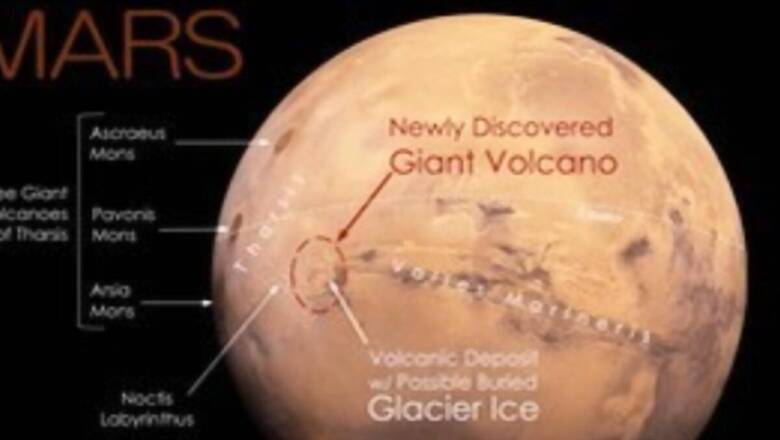
views
The scientists at SETI Institute have spotted a giant volcano that had been hidden in ‘plain sight’ for years near Mar’s equator. The volcano, provisionally named “Noctis volcano”, is 29,600 feet in elevation and stretches 450 kilometres in width. The findings of this discovery were recently announced at the 55th Lunar and Planetary Science Conference held in Texas, USA. The researchers believe that they are likely to find a buried glacier under this volcanic province. The examination of the volcano shows that it has seen eruptions in recent times but it is unclear if it is still active or will erupt again.
This discovery is being deemed extremely enlightening to study Mar’s geology and its evolution over the years. In a press statement, Dr. Pascal Lee, a planetary scientist at the SETI Institute said, “We were examining the geology of an area where we had found the remains of a glacier last year when we realized we were inside a huge and deeply eroded volcano.”
For a long time, scientists have suspected to find volcanos just south of the planet’s equator. Sourabh Shubham, a student at the University of Maryland’s Department of Geology who was involved in the newly discovered volcano’s study said that this area of the red planet is “known to have a wide variety of hydrated minerals” and “volcanic setting for these minerals had long been suspected.” He added that the discovery of the volcano is like a “long-sought ‘smoking gun’”.
View this post on Instagram
Talking about what makes the Noctis volcano site “exceptionally exciting”, Dr Lee said, “It’s an ancient and long-lived volcano so deeply eroded that you could hike, drive, or fly through it to examine, sample, and date different parts of its interior to study Mars’ evolution through time.” He explained that since the volcano has a long history of mingling and with water and ice it is a prime location to research astrobiology or search for signs of life. He added, “Finally, with glacier ice likely still preserved near the surface in a relatively warm equatorial region on Mars, the place is looking very attractive for robotic and human exploration.”
It is interesting to note that back in 2022, a breakthrough research by the Swiss Federal Institute of Technology hinted that there could be magma flowing deep below Mars’ surface. According to the study published in the journal Nature Astronomy, the study showed that the magma under the red planet could be from a volcanic activity that occurred in the last 50,000 years. Now two years later, scientists have spotted a new volcano on Mars.


















Comments
0 comment